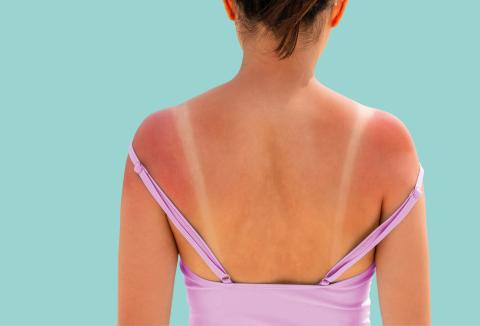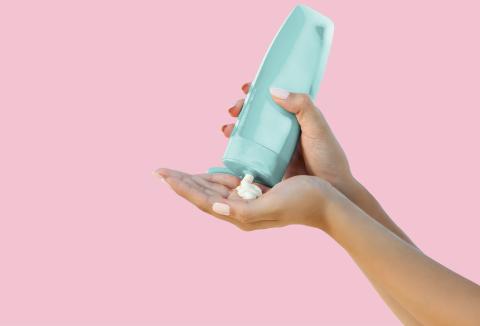As Brits, there’s nothing more exciting to us than the sun showing its bright face and lighting up our lives. Within minutes of that heat touching our skin, thousands flock to the beach, starved of the sun and desperate for the tan that they’ve waited so patiently for over the cold winter months.
However, we tend to get a little overexcited when the sun comes out and aren’t always prepared for its power. As exciting as it is when the sun makes its long-anticipated comeback, there are various safety precautions we should all take to ensure that the sun not only doesn’t ruin our summer but also doesn’t risk ruining much more.
The importance of sun protection
To make sure you’re fully prepared for the sun and any upcoming holidays to exotic countries you may have, you can book a travel health and vaccination service at your local pharmacy, so you can make sure that you can enjoy your holiday to the max, without sun burn ruining it on day one!
The sun is a very complex and powerful entity, made up of hydrogen and helium, and emits lots of different rays which have an impact on our skin. The most notable for this article is ultraviolet light or UV rays. UV rays damage the skin cells and mutate our DNA, causing it to burn the upper layer of the skin if it’s exposed to it for too long.

- Skin feels hot to the touch
- Skin is sore or painful
- Skin is flaking or peeling
- Whiter skin appears red or pink
Severe sunburn symptoms
- Blisters or swelling
- High temperature or fever
- Feeling of nausea, dizziness or tiredness
- Headache or cramp
Heat Exhaustion
Heat exhaustion is an immediate effect of experiencing too much sun, although it’s not too serious and you’ll usually begin feeling like your usual self after 30 minutes of cooling down. Symptoms include feeling tired and dizzy, feeling very thirsty, feeling weak, and cramps in the arms, legs and stomach. Ensure you have plenty to drink and stay in a cool area away from direct sunlight.]
Sunstroke
Heat exhaustion can develop into sunstroke or heat stroke if you still feel unwell after 30 minutes of resting. This needs to be treated as an emergency. Symptoms of sunstroke include a very high temperature but no sweating, shortness of breath and confusion, and in very extreme cases, seizures, fits, and loss of consciousness.
Call 999 if someone has symptoms of sunstroke.
Skin Cancer
Melanoma skin cancer is mainly caused by prolonged exposure to ultraviolet light. Anyone can develop skin cancer, but some people are at higher risk, such as those with paler skin or a high number of moles. Skin cancer is preventable 90% of the time, even just being sunburnt once every two years triples your chance of melanoma skin cancer.
Skin cancer can usually be recognised as a new mole, or changes to existing moles, particularly in areas that are exposed to the sun. Surgery to remove the mole is the main form of treatment, however, if the cancer has spread to other areas of the body, chemotherapy and radiotherapy are alternative treatment methods.
Related Article: How to support someone with cancer
Sunburn tends to last for approximately seven days if you stay out of the sun after experiencing symptoms. If you continue to expose yourself to the sun after already burning, the severity of the sunburn will increase and last longer.
If you have found you’ve caught the sun a tad too much, there are various things you can do to treat it and take care of your skin so that you can continue to enjoy the summer.
- Get out of the sun ASAP
- Cool your skin with a damp cloth or cool shower – don’t use ice!
- Cover sunburnt skin with loose clothing to allow it to air
- Continue to use sun cream
- Apply after-sun cream
- Take painkillers such as paracetamol or ibuprofen
5 simple sun protection habits to protect your skin from UV damage
1. Wear UV sun protection clothing
When spending time outdoors, especially in direct sunlight, it’s important to cover up as much as possible with long sleeves and trousers, ideally with clothing that is lightweight and dark. Dark colours absorb UV rays more than lighter colours. UPF clothing especially is best when it comes to protecting your skin.
2. Stick to the shade
The shade is your friend. Sticking to the shade is a much safer option than sitting in direct sunlight. It doesn’t protect you completely from sunburn, but the strength of the UV rays is lessened considerably.
3. Use at least factor 30 sun cream
Of course, this article would be missing something if we didn’t tell you to wear sun cream in the sun! However, to be more specific, factor 30 sun cream protects you from around 96% of UVB rays, essentially taking it 30 times longer for your skin to burn. Factor 30 sun cream is easily accessible at your local pharmacy.
4. Listen to your body
If sitting in the sun is beginning to feel like hard work, it’s because your body is probably telling you that it is! If you feel like you’re struggling, don’t ignore it, your body knows what it needs to do, what you need to do is listen to it.
5. Keep reapplying your sunscreen
Many people think that applying sun cream once before leaving the house is enough to protect you all day. Wrong. Just like make-up, sun cream will slowly rub off throughout the day, so it’s important to remember to keep reapplying it, especially on your arms, legs, face, and the back of your neck. It’s especially important to top up your sun cream if you have been in the water.
Which sunscreen is right for me?
SPF, or Sun Protection Factor, is the measurement of how good a product is at protecting you from the sun. The higher the number, the longer it takes for your skin to burn. It’s always best to look for SPF 30 sun cream at the very least. However, there are various skin types out there and just a simple sun cream might not be enough. Luckily, there’s a variety out there so you can find the perfect match, here are some examples for different skin types:
- Moisturising sun cream for dry skin
- Water-based sun cream for oily skin
- Alcohol/fragrance-free sun cream for sensitive skin
- Mineral sun cream for acne
Visit your local pharmacy and ask your pharmacist about sun cream that works for your skin type.

How to protect your eyes from sun damage
With all this talk of skincare, it’s easy to forget that the sun affects other areas of your body, too, such as your hair and eyes. Your eyes are an important yet delicate organ, so it’s important to protect them from harsh sunlight. Luckily, we have sunglasses to do just that! Sunglasses are made with a UV coating that absorbs harmful UV rays to prevent them from damaging your eyes, essentially working as a shield to protect your eyes.
Best sunglasses for eye protection
Sunglasses are more than a fashion accessory, when picking out a new pair, you should be considering something other than style, and that’s how well they’ll protect your eyes.
There are five different categories of sunglasses, from 0 to 4. Category 0 is a clear or very light lens. Category 4 is a very dark lens for mountain climbing or snowboarding. Category 3 is the most common form of sunglasses and will protect your eyes on bright days whilst still being safe for driving – however the darkness of your sunglasses has nothing to do with UV protection, only glasses with UV400 protection offer the best sun protection.
Your pharmacist can help you figure out the best sunglasses for you.

Common myths about sun protection
Like many health conditions and risks, there have been many myths created surrounding sun protection that are very convincing. We’re here to separate fact from fiction.
Although sticking to the shade is always the safest option when you’re outdoors, it doesn’t completely protect you from UV rays. Even if you are in the shade, you can still get sunburnt, so continue applying that sun cream!
Although we only feel the warmth of the sun in the summer, it’s still there for the rest of the year. You’re much less likely to get sunburnt in the winter, but there is still a risk of it if you spend a lot of time outdoors, especially if you spend time around water or snow.
Getting sunburnt doesn’t seem like a big deal when it only happens once a year, however, as we mentioned previously, even just being sunburnt once every two years triples your chance of melanoma skin cancer.
If you’re looking for alternative and safer ways to get a natural tan, then I’m afraid you’ll be disappointed. There’s no safe way to get a natural tan. The lights used in tanning beds are ultraviolet C rays, they’re less likely to cause sunburn but prolonged exposure to them can still increase the risk of skin cancer.
Health benefits of sunlight
Although there are lots of risks that come with exposure to too much sunlight, it is still essential to our health. After reading this article you may feel you need to shut the curtains and hide from the sun under a blanket, but there are a lot of health benefits that come with taking in healthy amounts of sunlight.
Probably the most widely known benefit of sunlight is its ability to boost your vitamin D, which regulates the amount of calcium and phosphate in the body, which is needed to keep your bones, teeth, and muscles healthy and strong.
The sun also helps your mental health, boosting your mood. Getting out in the sun for just five minutes a day can have a positive impact on your well-being.
Also read: Seasonal Affective Disorder: How to cope with feeling SAD
So there we have it! Everything you need to know about keeping safe in the sun! It’s all about balance, we don’t want you hiding away from the sun, but you also don’t want to ruin your summer by being blistered with burns! All you need to remember is to wear at least factor 30 sun cream, protective clothing, stick to the shade, and enjoy!